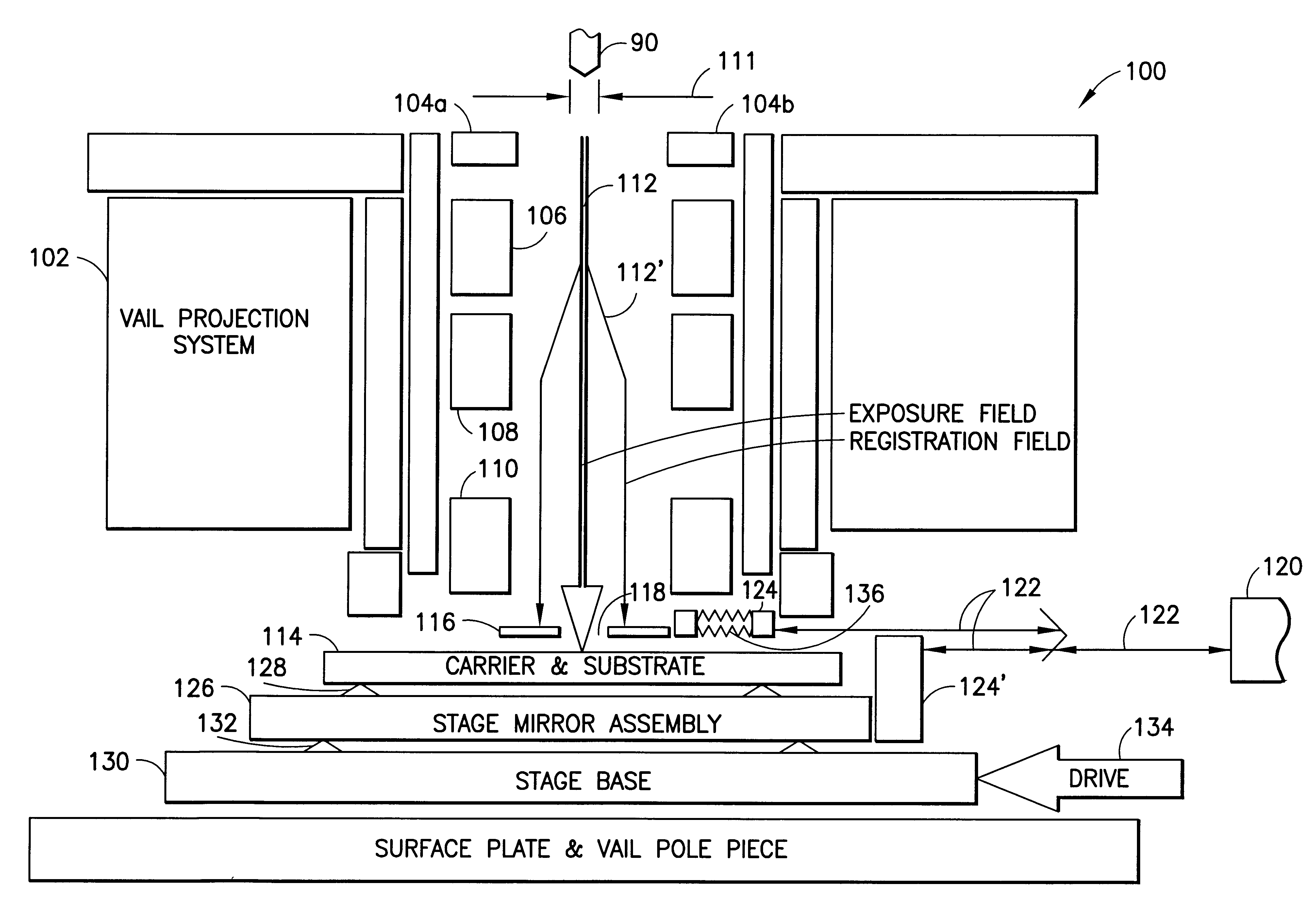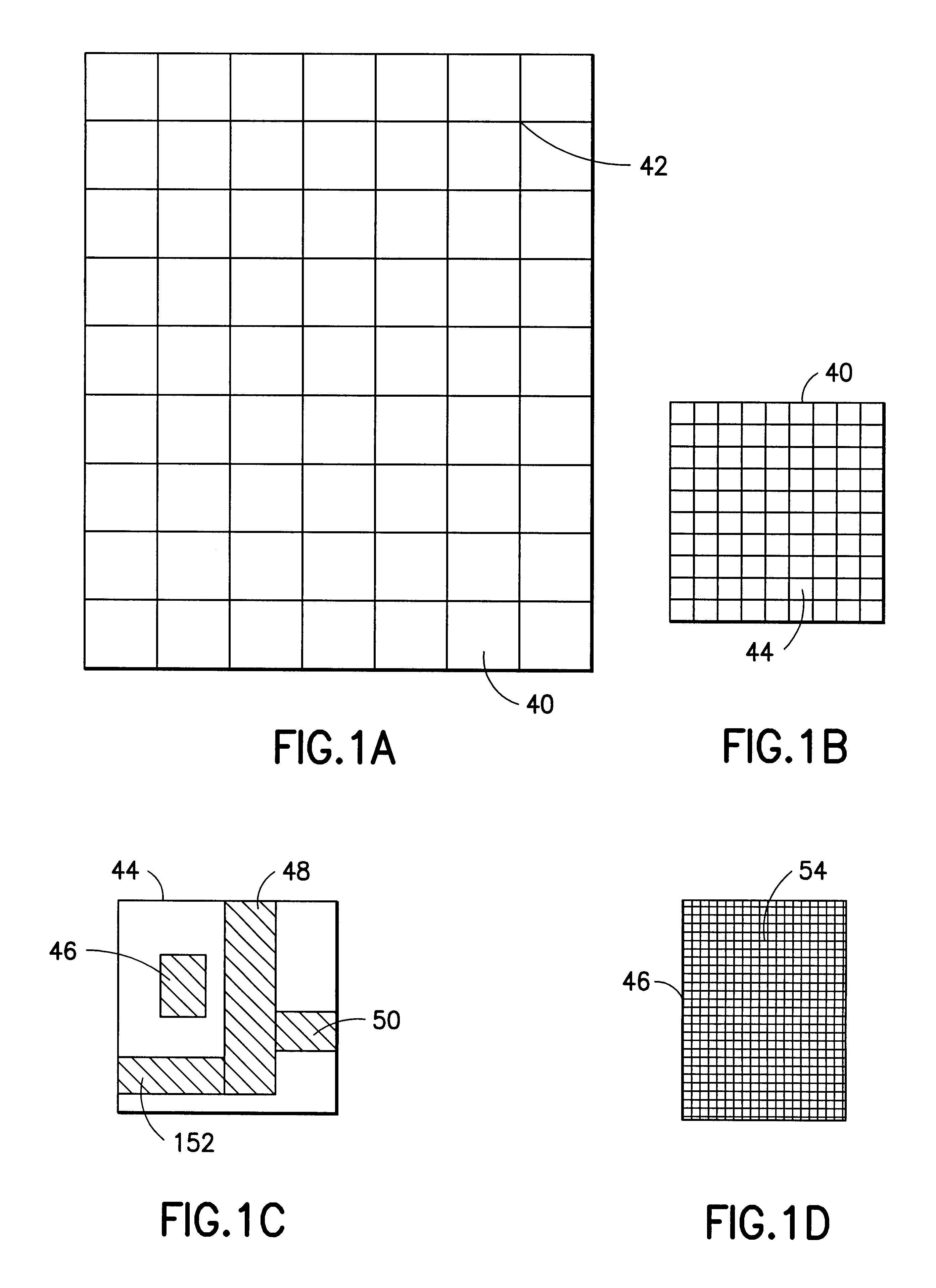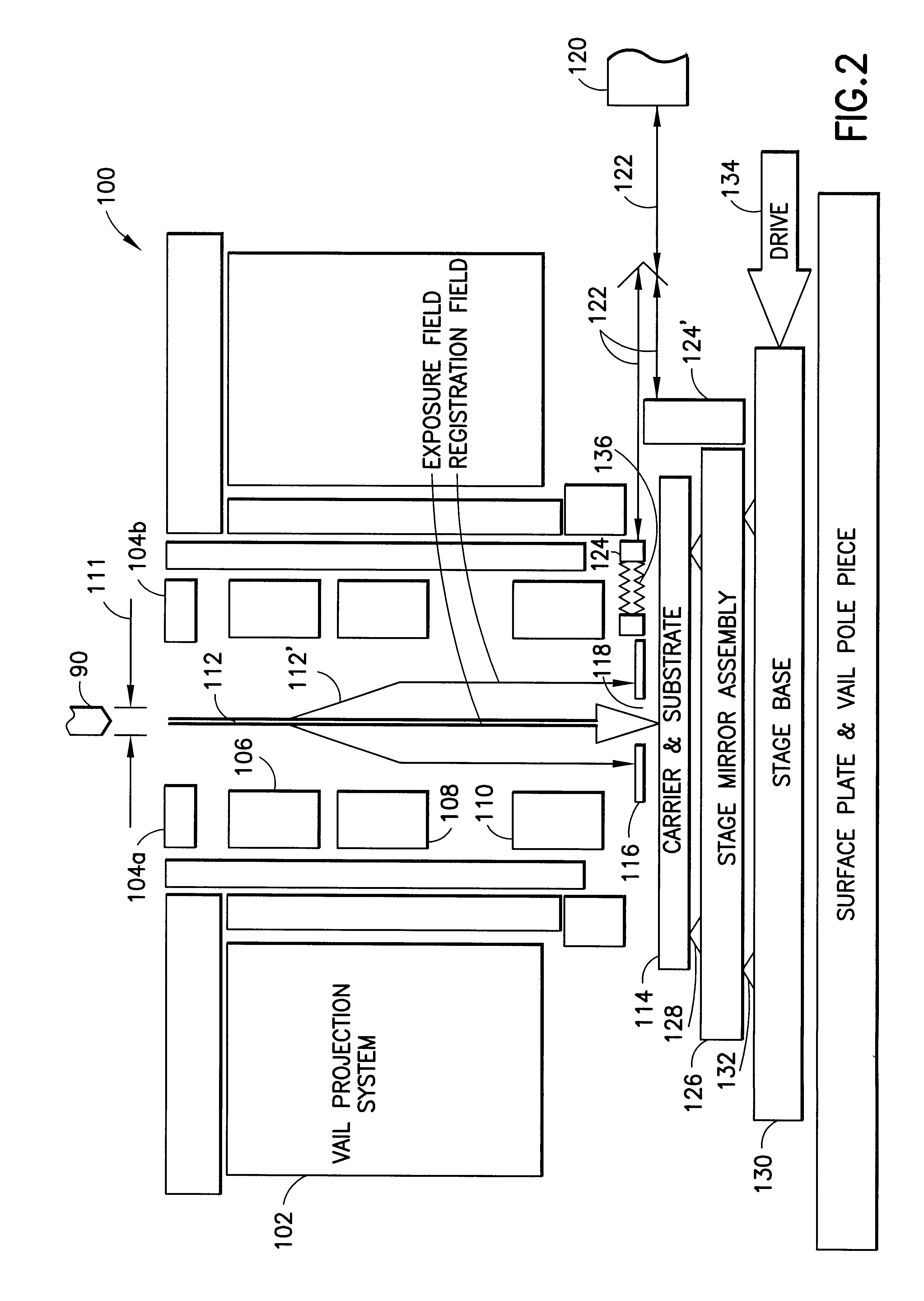Target locking system for electron beam lithography
a technology of electron beam and target locking, which is applied in the field of particle beam lithography system, can solve the problems of e-beams exhibiting what is called drift, i.e., exhibiting increasing inaccuracy in one direction, and introducing errors by moving the stage back into position from the measurement area,
- Summary
- Abstract
- Description
- Claims
- Application Information
AI Technical Summary
Problems solved by technology
Method used
Image
Examples
Embodiment Construction
Referring now to the drawings, and more particularly, FIGS. 1A-D represent the hierarchical relationship between the individual components printed to form a pattern. FIG. 1A represents a typical substrate pattern that is divided into an array of fields 40 to accommodate a pattern which is much larger than the preferred e-beam lithography system's writing field. The collection of fields 40 is referred to as a skeleton 42. Each field 40 is identified by the x,y address of its center point. In FIG. 1B, each field 40 is divided into multiple sub-fields 44, each identified by the x, y address of its center point. In FIG. 1C, each subfield 44 may include one or more rectangles 46, 48, 50 and 52. Rectangles are logical groupings and are not specifically addressed. In FIG. 1D, each rectangle 46, 48, 50 and 52 is formed from groups of individual spots 54.
The preferred e-beam lithography system is a Variable Axis Immersion Lens (VAIL) e-beam system and is a double hierarchy deflection system....
PUM
| Property | Measurement | Unit |
|---|---|---|
| field size | aaaaa | aaaaa |
| diameter | aaaaa | aaaaa |
| distance | aaaaa | aaaaa |
Abstract
Description
Claims
Application Information
 Login to view more
Login to view more - R&D Engineer
- R&D Manager
- IP Professional
- Industry Leading Data Capabilities
- Powerful AI technology
- Patent DNA Extraction
Browse by: Latest US Patents, China's latest patents, Technical Efficacy Thesaurus, Application Domain, Technology Topic.
© 2024 PatSnap. All rights reserved.Legal|Privacy policy|Modern Slavery Act Transparency Statement|Sitemap



